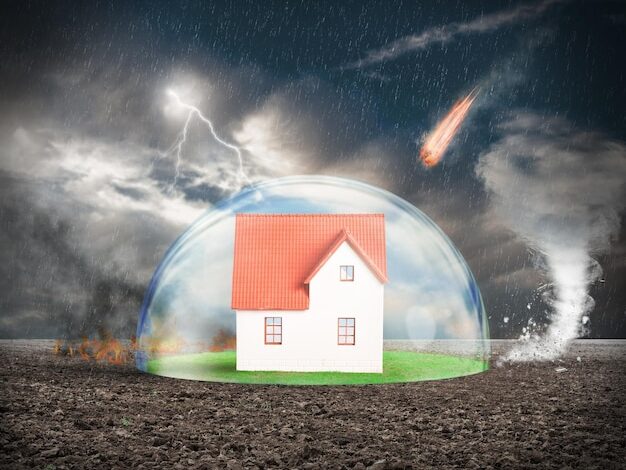How to secure your home against natural disasters (for wind, cold, floods and more…)

How to Secure Your Home Against Natural disasters
The harmful results of natural calamities may not be foreseen, yet they happen as big bolts out of the blue destroying heavily thereby putting at risk various properties. For purposes of saving life and property in case of windstorms, icy weather conditions rainstorms etc, securing your home from different disasters becomes paramount. Below are several effective ways to safeguard your house against these occurrences.
1. Reinforce Your Roof
Your roof provides first line protection for your dwelling from different weather patterns around the world. Check the condition of your rooftop and install impact resistant roofing materials. Attach hurricane straps or clips for securing its connection with walls in order to minimize chances of being swept away by gales. Always inspect and replace damaged or lost shingles regularly keeping it strong.
2. Install Storm Shutters
Windows and glass doors are the weakest points during storms. Installing storm shutters can protect them from wind-borne garbage. Alternatively, shatterproof film or high-impact glass may be used to reduce the risk of breaking down. These prevent injuries and lessen damage on your house’s interior.
3. Secure Doors and Garage Doors
Heavyduty deadbolts reinforce exterior doors and at least three hinges are a must on such doors as well. For garage doors, it is advisable to install a bracing kit that would strengthen them against wind pressure. There is also an option of reinforcing double entry door slide bolts and changing their hinge attachments for stability purposes.
4. Protect Against Flooding
Flooding could result in tremendous loss inside your house. Therefore, elevate electric devices like warm water heaters or HVAC systems above possible flood level marks. Sump pumps which have battery backups will pump water out from basements and crawlspaces stopping floods from water coming into the home when it rains heavily using flood barriers or sand bags to deter local building areas during adverse weather conditions.
5. Insulate and Seal Your Home
Your house will be well shielded from extreme cold and heat, due to proper insulation and sealing. This is achieved through insulating the walls, attics, and basements so that there is a constant temperature indoors. To prevent drafts and water infiltration, cracks and gaps around the windows, doors and pipes should be sealed. Besides these actions help in saving energy costs.
6. Trim Trees and Secure Outdoor Items
A gusty wind can cause trees to fall down along with their branches which can damage your house and property. Therefore it is advisable to trim your trees regularly as well as cut off dead or weak branches. When storms are expected, ensure that outdoor items like patio furniture, grills and gardening tools are secured from becoming projectiles during such weather conditions. If there is any indication of heavy rainfall expected then keep these elements inside the house until otherwise stated.
7. Create a Safe Room
During extreme weather events including tornadoes or hurricanes, a safe room provides for secure place for family members. Ideally such rooms should not have any windows on the lowest floor of the house with reinforced walls made out of concrete or steel. You should put emergency supplies in it including water, non-refrigerated food, flashlights and first aid kits among others.
8. Keep up your house’s base
Natural calamities can be weathered only if there is a sound base on which they repose. So hurry and get them mended as fast as you can because cracks are always found within these bases especially concrete ones. To avoid water accumulation around the house, make sure the ground slopes away from its foundation. You might also want to install foundation vents so that during floods, water is able to pass through them reducing pressure.
9. Go over Your Insurance Coverage
Homeowner’s insurance policies may vary in relation to the natural disasters that are most likely to occur within a given area; therefore, find out if these policies cover earthquakes, fires, floods etc., among other forms of destruction. Moreover, it is recommended that you get some more coverage for damages like flood or earthquake damage if necessary because a normal policy might not suffice for them. Go ahead and document your home because this will speed up approval times for claims among other benefits associated with documenting personal possessions.
In conclusion, proactive steps and ongoing upkeep are necessary in order to keep natural disasters away from home. Roof reinforcement, storm shutters installation, door locks security, flood protections, insulation installation, tree trimming, safe room building, foundation repair, and insurance policies review are some of the ways that can mitigate damages to a house and protect family members. When calamity strikes, prior arrangements will determine how much harm is been caused.
